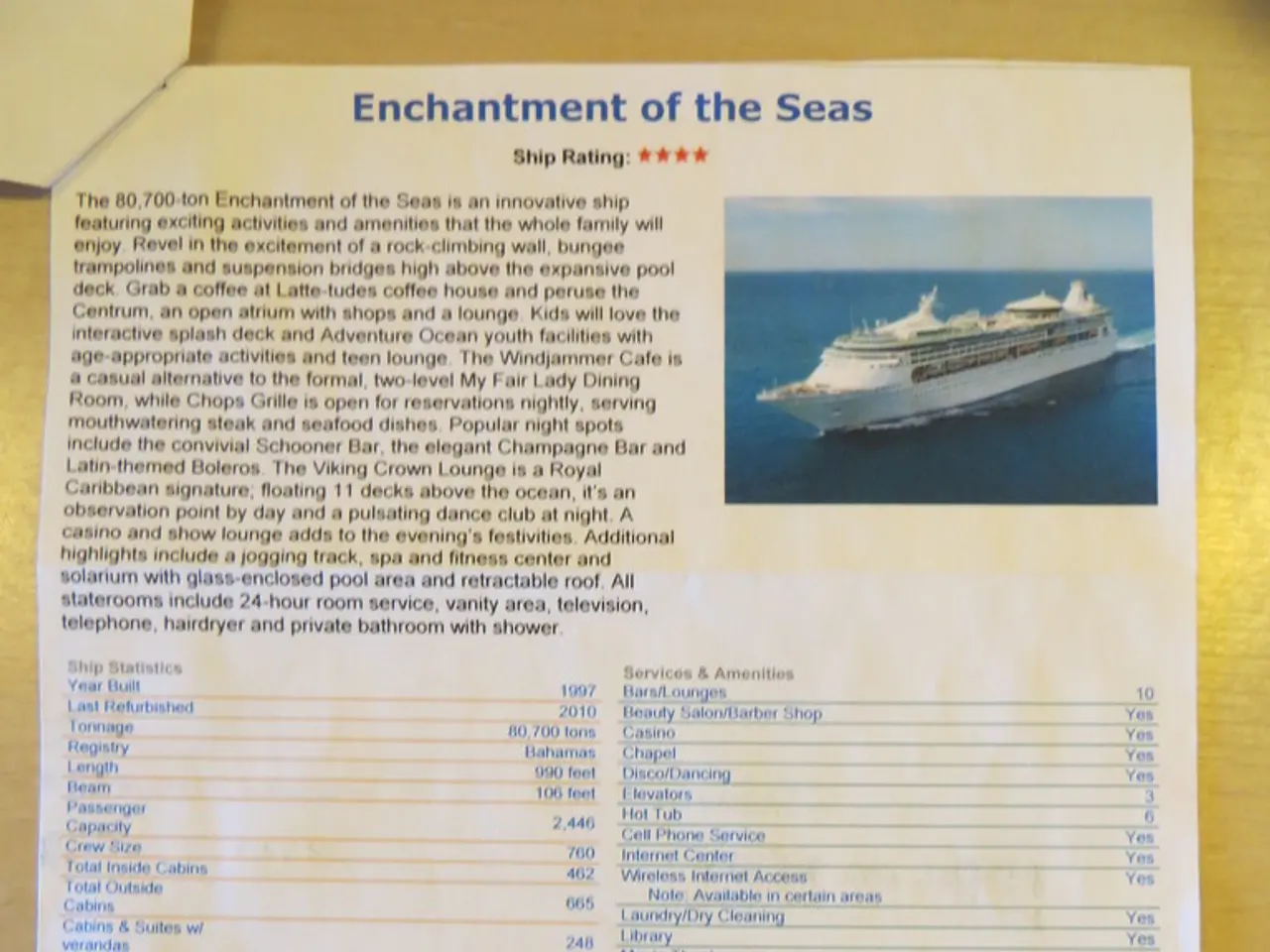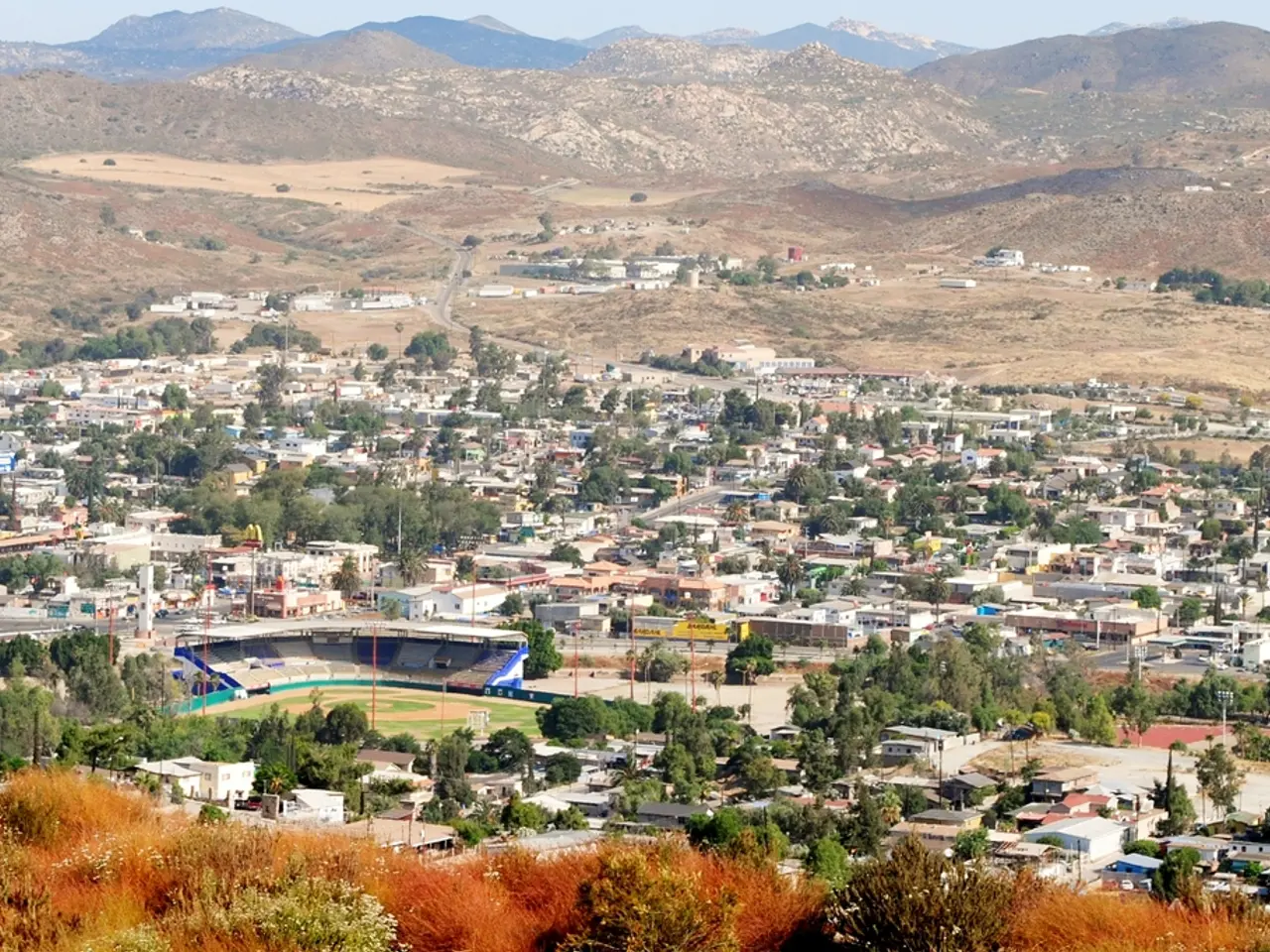Navigational Map's Monetary Worth
The liner Antilles, a vessel known for its luxurious cruises, ran aground in January 1971 near the Grenadines islands, between Mustique and the Pillories [1]. Thankfully, no one was injured, but the ship was lost. This incident raised questions about the accuracy of nautical charts and the responsibilities of the Captain.
The Antilles' grounding occurred in a passage that was not normally used by such a ship, leading to speculation that the Captain may have been influenced by the company's encouragement to make the voyage as interesting as possible [2]. However, it was later found that the Captain's course was based on false premises, leading to the grounding [3].
The 1861-62 survey document used as a basis for the chart contains soundings at closer intervals near the scene of the Antilles' stranding compared to the minimum acceptable for the scale [4]. Circles have been added to the 1861-62 survey document around the scene of the Antilles' stranding to highlight areas where no soundings exist [5]. These findings suggest that the chart may have been incomplete or inaccurate, contributing to the Antilles' fate.
The criticism of the Captain focused on his decision to take an unjustifiable risk to show passengers an enchanting landscape [6]. The chart's worth should be critically estimated by cartographers and this information should be included in Sailing Directions [7]. The remedy for the mariner's risk of mistake when interpreting charts is the critical evaluation of the value of each chart by hydrographers, to be included in Sailing Directions [8].
Modern methods of underwater survey have greatly enhanced the accuracy and reliability of nautical charts. These methods, such as multibeam echosounders, satellite-derived bathymetry, and crowdsourced data collection, provide detailed, accurate mapping of the seabed, revealing underwater features like mountains, canyons, and plains critical for safe navigation [9].
Despite these advances, older charts remain less reliable since they were based on less precise surveys. To address the varying quality and recency of survey data, NOAA incorporates quality indicators such as Zone of Confidence (ZOC) diagrams and Source Diagrams on charts [10][11]. These graphics convey survey quality and hydrographic data reliability to mariners, allowing them to assess risk and navigate more safely by preferring routes informed by modern survey data.
In conclusion, the Antilles' grounding serves as a stark reminder of the importance of accurate nautical charts and the critical role of hydrographers in ensuring safe navigation. The Antilles incident, though tragic, has led to significant advancements in nautical charting, demonstrating the unremitting task of evaluating the value of charts.
References: [1] https://www.maritime-executive.com/article/antilles-ran-aground-near-grenadines-islands [2] https://www.jstor.org/stable/45152767 [3] https://www.jstor.org/stable/45152767 [4] https://www.jstor.org/stable/45152767 [5] https://www.jstor.org/stable/45152767 [6] https://www.jstor.org/stable/45152767 [7] https://www.jstor.org/stable/45152767 [8] https://www.jstor.org/stable/45152767 [9] https://www.ncbi.nlm.nih.gov/pmc/articles/PMC4830890/ [10] https://www.nauticalcharts.noaa.gov/maritimedocs/ENC_UserGuide/ENC_UserGuide/ENC_UserGuide_Chapter_4.html [11] https://www.nauticalcharts.noaa.gov/maritimedocs/ENC_UserGuide/ENC_UserGuide/ENC_UserGuide_Chapter_4.html [12] https://www.tandfonline.com/doi/abs/10.1080/03734637308955498 [13] https://www.tandfonline.com/doi/abs/10.1080/03734637208955139
The Antilles' grounding highlights the significance of precise hydrographic surveys in ensuring safe maritime trade. Improved technological advancements in science, such as multibeam echosounders, satellite-derived bathymetry, and crowdsourced data collection, have fortified the accuracy of modern nautical charts, making them crucial for education-and-self-development in maritime navigation.




